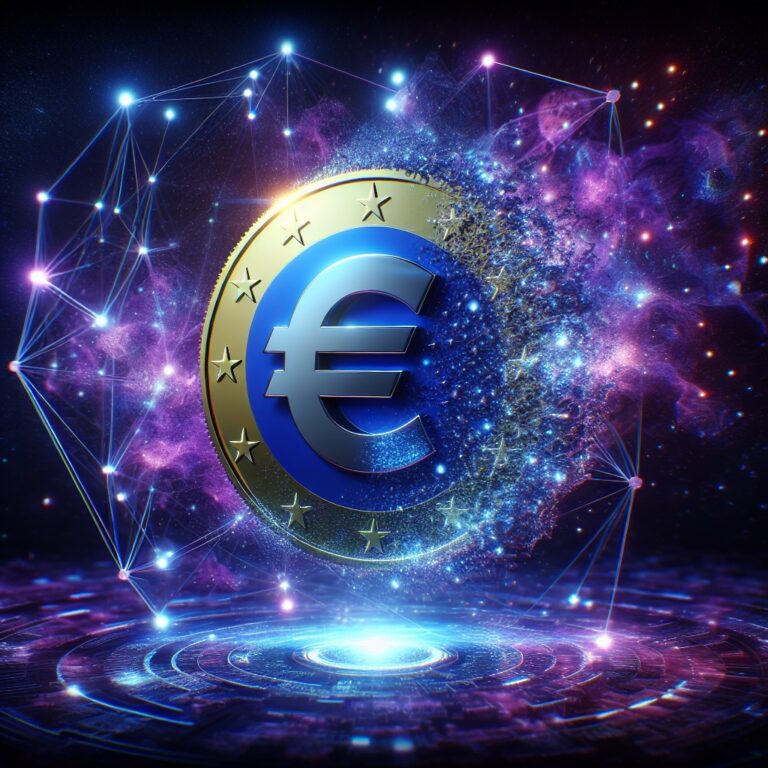The European Union is reportedly eyeing Ethereum and Solana as potential platforms for its digital euro initiative, highlighting a significant pivot towards public blockchains over traditional private models. This move, detailed by the Financial Times, underscores the EU’s ambitions to modernize its currency infrastructure and stay competitive in the rapidly evolving digital finance landscape.
Public Blockchains in the Spotlight
The EU’s consideration of Ethereum and Solana marks a daring departure from the private blockchain frameworks traditionally favored by central banks, such as China’s digital yuan project. Public blockchains, known for their transparency and decentralized nature, offer a distinct contrast to the controlled environments of private networks. It seems the EU is betting on these qualities to enhance trust and security in its digital currency endeavor.
“Public blockchains like Ethereum and Solana provide an openness and innovation that private networks simply can’t match,” noted Clara Jensen, a blockchain analyst with Crypto Insights. “The move could democratize access to the digital euro and allow for greater integration with existing decentralized finance applications.” This aligns with recent trends observed in the crypto market, where Ethereum, Solana, and Chainlink have shown resilience despite broader market fears.
Yet, this choice isn’t without its challenges. Public chains often wrestle with scalability issues, and Ethereum, despite its widespread adoption, has been criticized for high transaction fees during peak times. Solana, on the other hand, has boasted faster transaction speeds but has faced its own set of reliability hurdles. The EU’s interest in these platforms suggests a willingness to navigate these complexities to harness their potential.
A Strategic Shift in Digital Currency
The EU’s exploration into Ethereum and Solana is indicative of a broader strategic shift. By aligning with public blockchains, the EU appears to be setting the stage for a digital currency that is not only secure but also adaptable to the broader crypto ecosystem. Interestingly, this move also positions the EU to potentially tap into the burgeoning decentralized finance (DeFi) market, which relies heavily on these very networks.
According to insiders, the EU’s decision is driven by a desire to future-proof its currency system. “The digital euro needs to be more than just a digital version of cash,” said Marco Fernandez, a financial consultant specializing in digital currencies. “It has to integrate seamlessly with the digital economy, and public blockchains offer the flexibility necessary to evolve with technological advancements.”
However, the choice does raise questions about the regulatory implications of using public blockchains. The decentralized nature of these networks could complicate regulatory oversight, a concern that the EU will need to address as it moves forward.
Global Implications and Competitive Edge
The EU’s potential embrace of public blockchains could ripple across global markets. By choosing Ethereum and Solana, the EU signals a commitment to innovation and openness, which could spur similar initiatives from other regions. As nations grapple with the rise of digital currencies, the EU’s strategy may well influence global standards and practices.
Moreover, this move places the EU in a competitive position against other major economies like the United States and China, both of which are developing their own digital currencies. By leveraging public blockchain technology, the EU could potentially offer a digital euro that is not only secure but also more versatile than its counterparts. This is particularly relevant as Ether, Solana, and BNB have recently outshone Bitcoin in market performance, hinting at a shift in crypto dynamics.
Of course, the path forward is fraught with uncertainties. The technical integration of a digital euro on public blockchains will require rigorous testing and collaboration with blockchain developers. There is also the matter of public perception and adoption, which will play a critical role in the digital euro’s success.
Looking Ahead
As the EU continues to explore the feasibility of deploying its digital currency on public blockchains, the broader financial community will be watching closely. This bold move could redefine how central banks approach digital currencies, setting a precedent for innovation and integration with the wider crypto market.
The EU’s decision to consider Ethereum and Solana is a testament to the growing influence of blockchain technology in the financial sector. Whether this approach will yield the desired outcomes remains to be seen, but it undeniably marks a pivotal moment in the digital currency race. As the EU navigates this uncharted territory, the world will be keenly observing its next steps—wondering if this gamble on public blockchains will pay off in the long run.
Source
This article is based on: EU exploring Ethereum, Solana for digital euro launch: FT
Further Reading
Deepen your understanding with these related articles:
- Myriad Moves: Where Are Ethereum, Solana and XRP Prices Headed Next?
- Solana Handles 100K Transactions Per Second in Test Run: Here’s Why It Matters
- Bitlayer’s YBTC Enters Solana as the DeFi Project Partners With Kamino Finance, Orca

Steve Gregory is a lawyer in the United States who specializes in licensing for cryptocurrency companies and products. Steve began his career as an attorney in 2015 but made the switch to working in cryptocurrency full time shortly after joining the original team at Gemini Trust Company, an early cryptocurrency exchange based in New York City. Steve then joined CEX.io and was able to launch their regulated US-based cryptocurrency. Steve then went on to become the CEO at currency.com when he ran for four years and was able to lead currency.com to being fully acquired in 2025.


